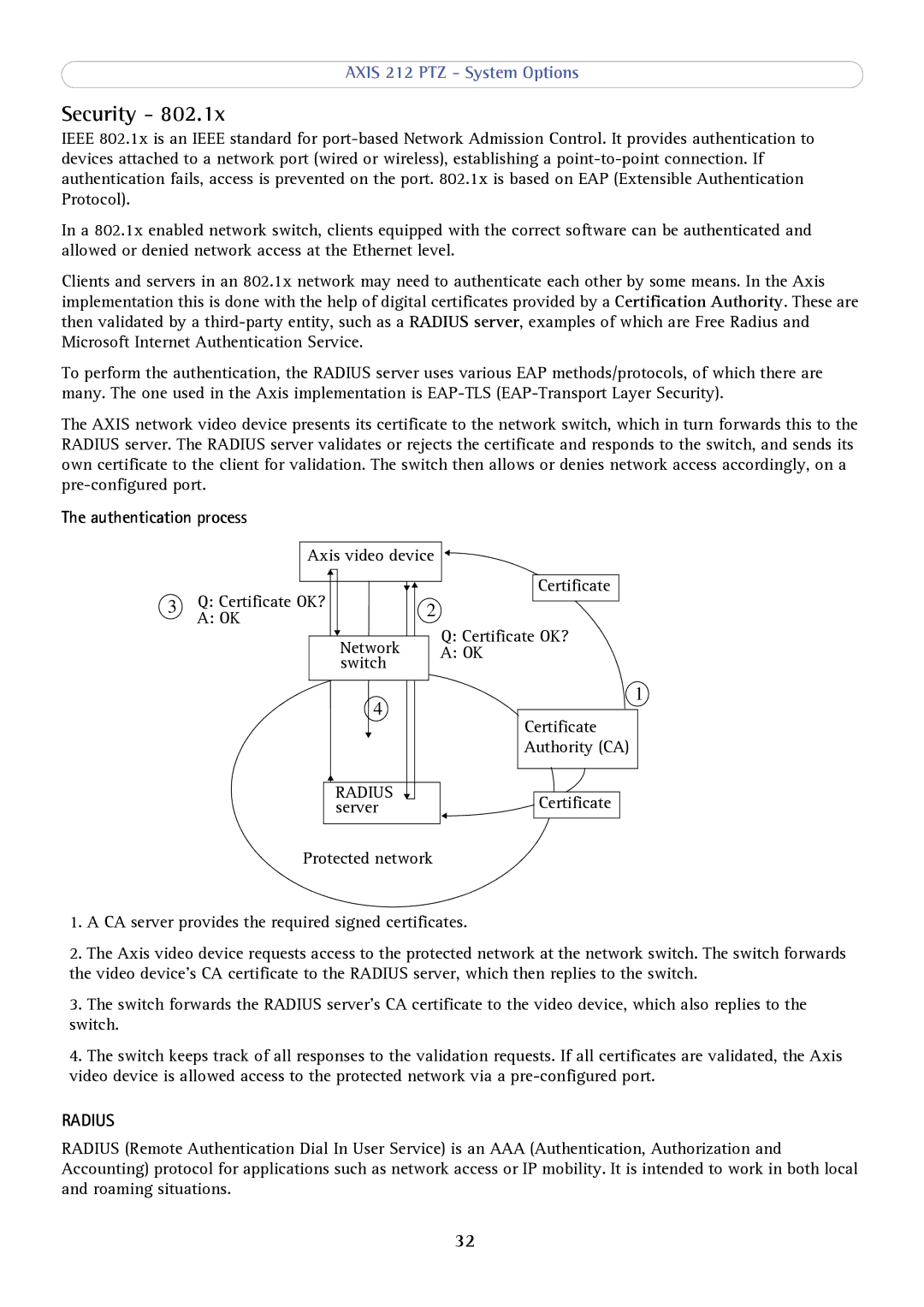
AXIS 212 PTZ - System Options
Security - 802.1x
IEEE 802.1x is an IEEE standard for
In a 802.1x enabled network switch, clients equipped with the correct software can be authenticated and allowed or denied network access at the Ethernet level.
Clients and servers in an 802.1x network may need to authenticate each other by some means. In the Axis implementation this is done with the help of digital certificates provided by a Certification Authority. These are then validated by a
To perform the authentication, the RADIUS server uses various EAP methods/protocols, of which there are many. The one used in the Axis implementation is
The AXIS network video device presents its certificate to the network switch, which in turn forwards this to the RADIUS server. The RADIUS server validates or rejects the certificate and responds to the switch, and sends its own certificate to the client for validation. The switch then allows or denies network access accordingly, on a
The authentication process
| Axis video device |
|
| |||||
|
|
|
|
|
|
|
| |
|
|
|
|
|
|
|
| |
|
|
|
|
|
|
| Certificate | |
Q: Certificate OK? | 2 | |||||||
|
| |||||||
|
| |||||||
A: OK |
|
|
|
|
| |||
|
|
|
|
|
|
| ||
Network | Q: Certificate OK? |
A: OK | |
switch |
|
4 |
|
| 1 | ||||||
|
|
|
|
|
|
|
|
| |
| Certificate |
| |||||||
|
|
|
|
| |||||
|
|
|
| Authority (CA) |
| ||||
|
|
|
|
|
|
|
|
|
|
|
|
|
|
|
|
|
|
|
|
RADIUS |
|
|
|
|
|
|
| ||
server |
|
|
|
| Certificate |
| |||
|
|
|
|
|
|
|
|
|
|
Protected network
1.A CA server provides the required signed certificates.
2.The Axis video device requests access to the protected network at the network switch. The switch forwards the video device’s CA certificate to the RADIUS server, which then replies to the switch.
3.The switch forwards the RADIUS server’s CA certificate to the video device, which also replies to the switch.
4.The switch keeps track of all responses to the validation requests. If all certificates are validated, the Axis video device is allowed access to the protected network via a
RADIUS
RADIUS (Remote Authentication Dial In User Service) is an AAA (Authentication, Authorization and Accounting) protocol for applications such as network access or IP mobility. It is intended to work in both local and roaming situations.
32
